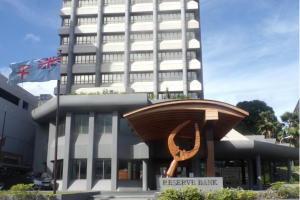 A summary of the reserve Bank of Fiji’s December Economic Review compiled by the Australia Fiji Business Council’s Communications Team.*
A summary of the reserve Bank of Fiji’s December Economic Review compiled by the Australia Fiji Business Council’s Communications Team.*
Global Economic Headwinds Impact Fiji
In the face of a weakening global economic environment, Fiji grapples with subdued growth in its major trading partners, marked by the lagged effects of monetary tightening and prolonged high inflation. This trend weighs on real incomes, household consumption, and housing investment, particularly in advanced economies like the United States and the Eurozone. However, disinflation gains momentum in select economies due to softened demand and positive base effects from lower international energy and food prices.
Mixed Outcomes in Commodity Prices
November witnessed mixed outcomes in commodity prices. While Brent crude oil and sugar prices experience declines, gold prices reach record highs. Concerns over sluggish fuel demand lead to Brent crude oil dropping to US$82.83 per barrel, while sugar prices declined to US26.04 cents per pound due to increased global supplies. In contrast, gold prices soared to US$2,057.20 per fine ounce, propelled by geopolitical conflicts and expectations of central banks’ interest rate cuts.
Healthy Domestic Economic Activity
Fiji’s domestic economic activity remains robust despite global challenges. The thriving tourism sector, strong remittances, and resilient domestic demand counterbalance slower economic growth in major trading partner economies. Visitor arrivals continue to grow, reaching 846,920 tourists in the year to November, reflecting a 51.0 percent increase compared to 2022.
Sectoral Challenges Offset Growth
However, specific industries face challenges. Cane and sugar production contract annually, forestry sector productions decline, and gold production drops. Nevertheless, positive effects from increased tourism, rising income, and higher remittance inflows (21.7 per cent, cumulative to November) continue to drive consumption activity.
Gradual Recovery in Investment Activity
Indicators for investment activity show signs of recovery, albeit at a gradual pace. Commercial banks’ new lending for investment purposes rises by 29.6 percent cumulative to November, with positive growth in the building & construction and real estate categories. Leading indicators, such as building permits and value of work put-in-place, exhibit improvements, although cement sales record a decline.
Tight Labour Market and Financial Sector Support
Labour market conditions remain tight, with a 30.3 per cent rise in job vacancies. The financial sector expands, supporting economic activity with an 8.6 percent increase in broad money in November. Domestic credit activity rises by 7.2 per cent, particularly lending to the private sector, which increases by 6.1 percent.
Trade Deficit Widens, Inflation Surges
Fiji’s merchandise trade deficit widened, reaching approximately $3.7 billion cumulative to October, driven by import growth. Headline inflation surges to 5.8 per cent in November due to higher prices across categories, primarily in food & non-alcoholic beverages, transport, and housing & utilities.
Adequate Foreign Reserves Amidst Risks
Foreign reserves stand at around $3.4 billion, covering 5.7 months of retained imports. The current economic outlook faces challenges, including geopolitical conflicts, potential adverse weather conditions, skilled labor shortages, and capacity constraints in the tourism industry.
Steadfast Monetary Policy
Considering these conditions, the Reserve Bank of Fiji (RBF) maintains the Overnight Policy Rate at 0.25 per cent in its last meeting on 7 December. Fiji navigates through a complex economic landscape, balancing domestic resilience against global uncertainties.
__
*This is an approximate summarisation. Details may be verified from Reserve Bank of Fiji’s original sources.



